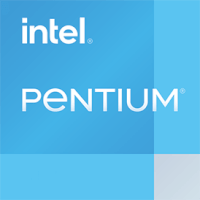

| Intel Core i7-2640M | Intel Pentium B960 | |
| 2.80 GHz | Frequency | 2.20 GHz |
| 3.50 GHz | Turbo (1 Core) | -- |
| -- | Turbo (All Cores) | -- |
| 2 | Cores | 2 |
| Yes | Hyperthreading ? | No |
| No | Overclocking ? | No |
| normal | Core architecture | normal |
| Intel HD Graphics 3000 | GPU | Intel HD Graphics (Sandy Bridge GT1) |
| 10.1 | DirectX Version | 10.1 |
| 2 | Max. displays | 2 |
| DDR3-1066DDR3-1333 | Memory | DDR3-1066DDR3-1333 |
| 2 | Memory channels | 2 |
| 16 GB | Max. Memory | 16 GB |
| No | ECC | No |
| -- | L2 Cache | -- |
| 4.00 MB | L3 Cache | 2.00 MB |
| 2.0 | PCIe version | 2.0 |
| 16 | PCIe lanes | 16 |
| 32 nm | Technology | 32 nm |
| BGA 1023 | Socket | PGA 988 |
| 35 W | TDP | 35 W |
| VT-x, VT-x EPT | Virtualization | VT-x, VT-x EPT, VT-d |
| Q4/2011 | Release date | Q4/2011 |
| show more detail | show more detail |
Geekbench 5 is a cross plattform benchmark that heavily uses the systems memory. A fast memory will push the result a lot. The single-core test only uses one CPU core, the amount of cores or hyperthreading ability doesn't count.
Geekbench 5 is a cross plattform benchmark that heavily uses the systems memory. A fast memory will push the result a lot. The multi-core test involves all CPU cores and taks a big advantage of hyperthreading.
The theoretical computing performance of the internal graphics unit of the processor with simple accuracy (32 bit) in GFLOPS. GFLOPS indicates how many billion floating point operations the iGPU can perform per second.